Time to bump the thread, eh? I'm currently away in Japan, but it doesn't mean I can't voltnut meters over the internet thru GPIB tunnels.

Testing MM's 4808 calibrator (uncalibrated) versus his 3458s for DCV INL.
Data sampled every 1% step from -110 to 110% of the scale. Both meters configured NPLC100, DELAY0, AZERO ON and ran DCV ACAL before test start. Data might be still compromised by aircon, as it's kinda wobbly during the sweep. Purple and green charts are direct INL of the meter vs calibrator's programmed value. Orange line is difference between two 3458A's used in the test. Each step have soak time 20 second after programming calibrator output to allow settling. Configuration for calibrator :
S0R6F0O1=.
10V sweep. About +/-0.2ppm INL over the span. Delta INL between meters <+/-0.12ppm (should be at least twice better, so perhaps more tuning for settings can be done). Could be also cabling issue or thermal EMF offset, to cause the zero crossing jump. I'm not very familiar with 4808 INL performance to judge now.
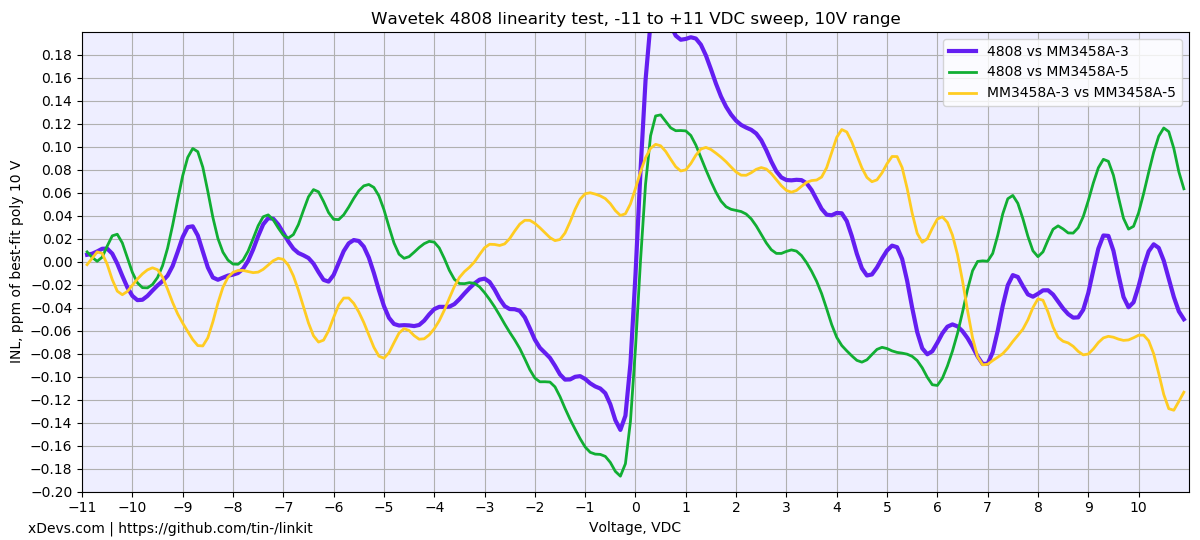
1V sweep is more interesting, in respect of delta INL between meters

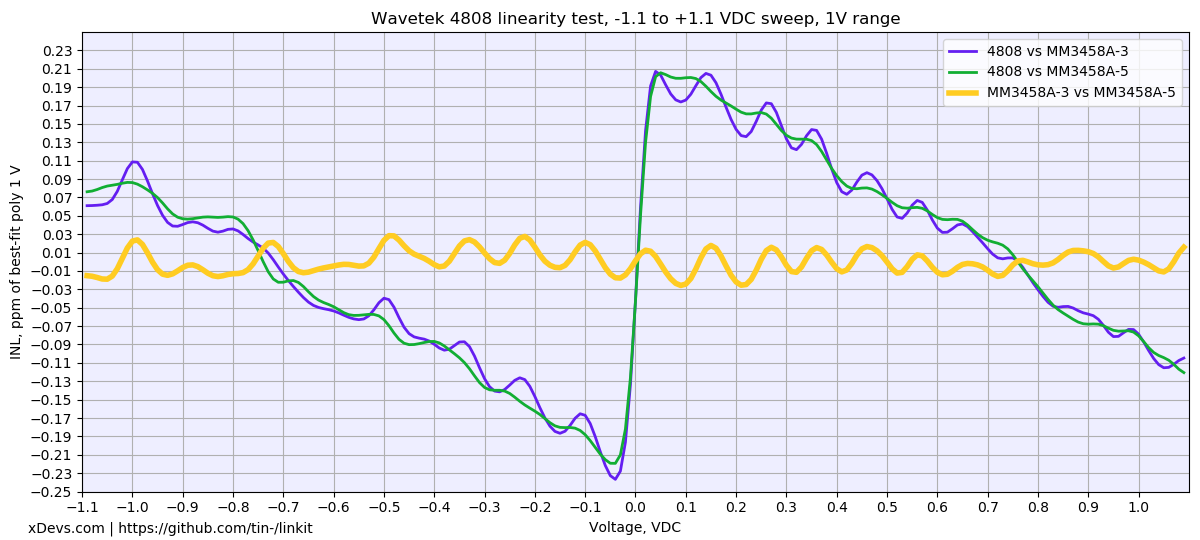
Same dataset, but zoomed in ppm INL scale to +/-0.05 ppm. I'd say +/-0.03ppm in full -1.1 to +1.1V sweep is impressive

.
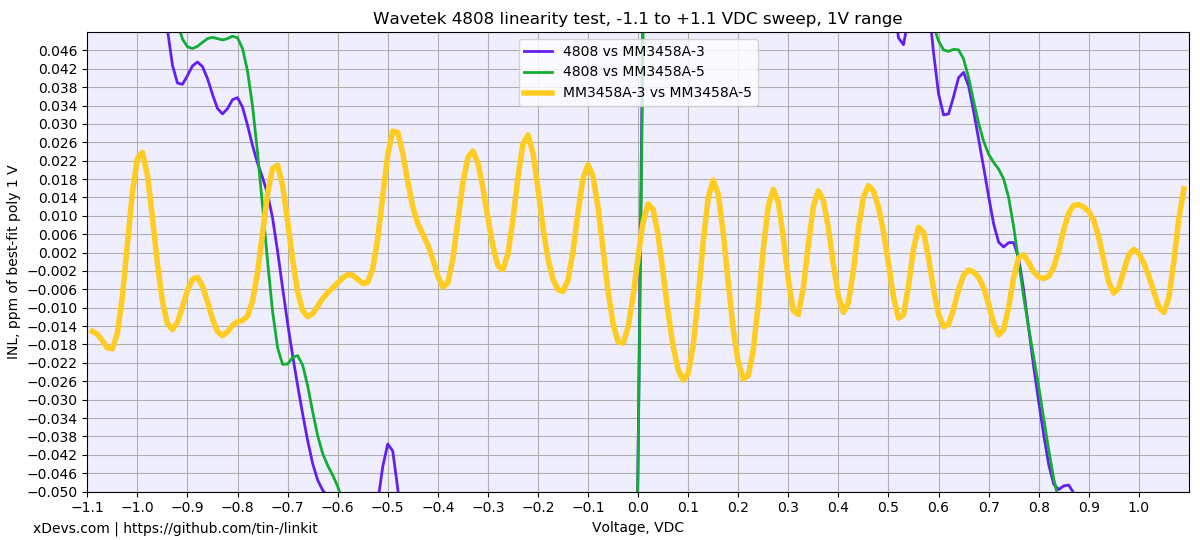
Now running 100mV test.
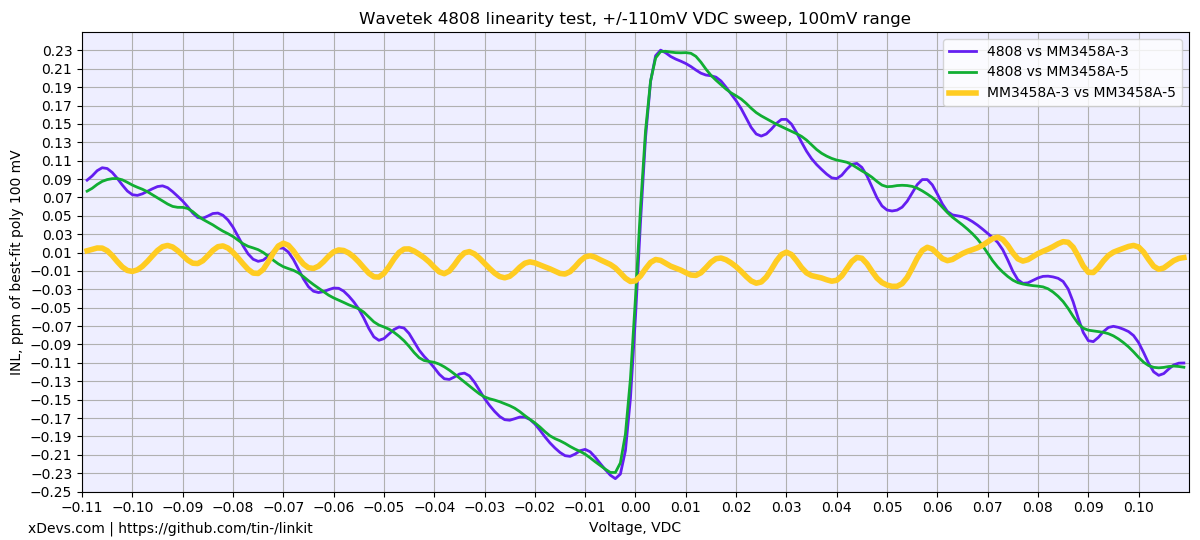
About same as 1VDC sweep, with max INL error +/- 0.03 ppm. Chicken dinner winner.
Retest 10V again, with NPLC50 instead of 100 now:
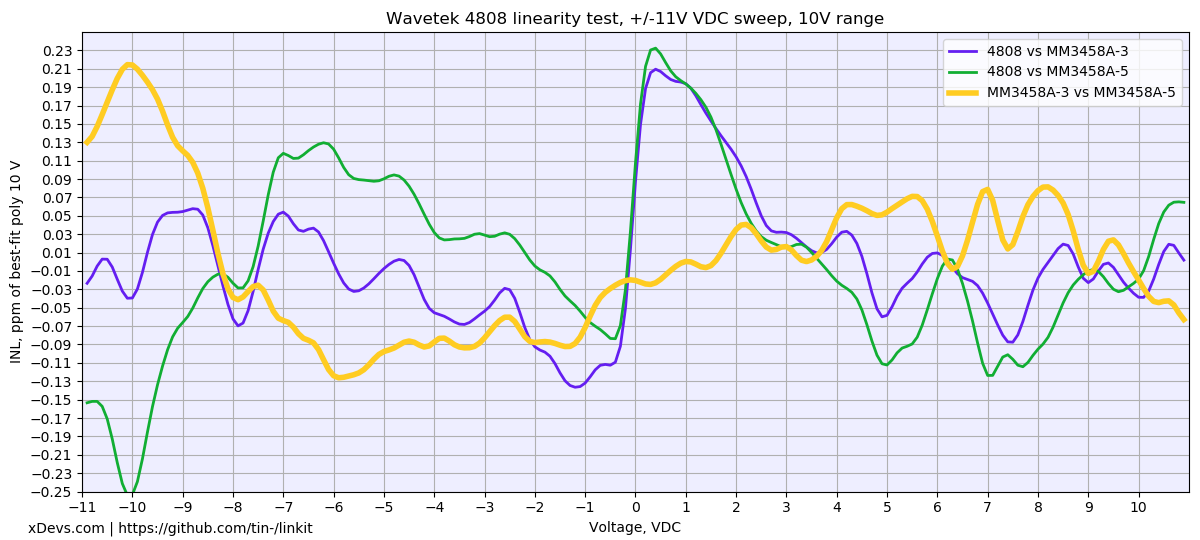
And 100V INL sweep:
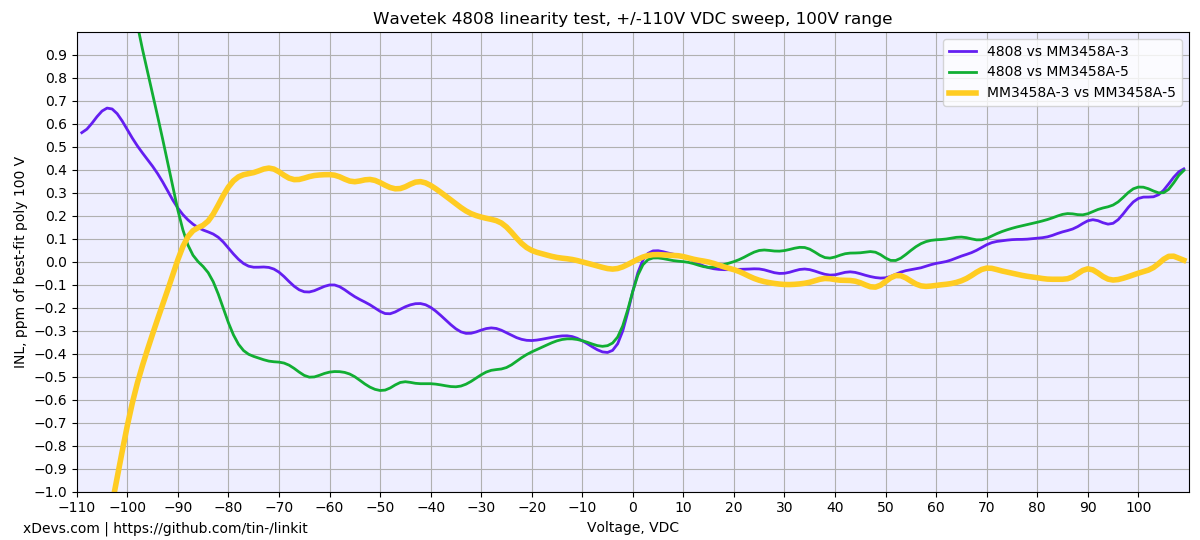
Negative polarity is somewhat strange. There is ~40 second delay on each 1V step, so it's hard to tie that just on self-heating errors of the HV divider.